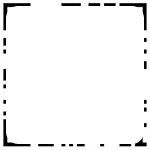Introduction to Common Defects of Clay Sand Castings
time:2023/7/7 0:00:00 browse:
The following common defects in clay sand castings are generally directly related to old sand. Some of the problems that occur during the production process, such as the thermal decomposition of various components in clay sand and old sand during cyclic use, result in changes in physical properties. If not used before, it will make the quality of molding sand unstable. The following are several common defects related to the quality of clay sand molding:
1. Air holes, inability to pour, cold shut off
The derivatives together become the fine powder of old sand. If the content of micro powder exceeds the limit, blocking the gaps between sand and gravel by micro powder will result in poor permeability of molding sand, and ineffective clay has a stronger water absorption ability than clay, extracting water from the clay. Therefore, when the content of ineffective clay is high, the amount of water required to achieve uniformity needs to be increased. Increasing the amount of water added to the molding sand to some extent also increases the gas generation of the molding sand. As the gas generation increases, the permeability decreases, and the resistance of the liquid received during casting increases. Inevitably leading to the formation of defects such as invasive pores, inability to pour, and cold shuts
2. Poor surface finish (including sand holes, burrs, and sand scars)
A large amount of ineffective clay causes poor tensile strength, low toughness, and poor permeability of molding sand. Increase the brittleness of the molding sand, making it prone to box collapse and sand drop. During casting, sand particles are prone to fall off and form defects such as sand holes, burrs, and slag inclusions, which in turn affect the quality of the casting.
3. Sand sticking
4. Sand falling and box collapse during modeling
Dead clay has no bonding force, and a large amount of dead clay has poor molding ability, making the molding sand prone to collapse and sand falling.
5. Adhesive mold
6. The phenomenon of porcelain transformation in old sand is increasing
7. Simple manual sand screening
Many enterprises adopt a double sand system, which involves simple manual screening, adding a large amount of new sand and a large amount of auxiliary materials to mix and use as surface sand, while back sand is screened regularly, which has many problems.
Tel
138-5369-2791
top






